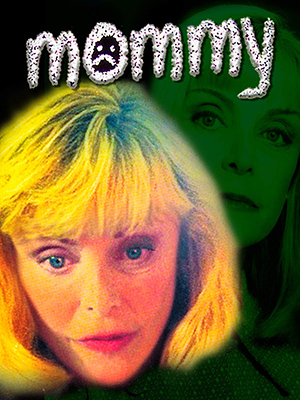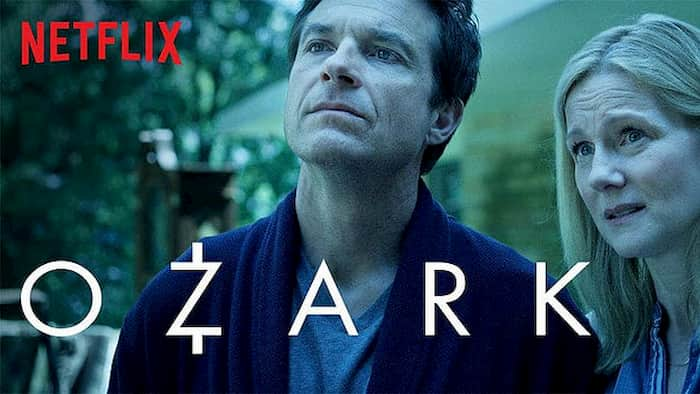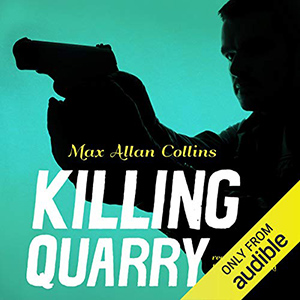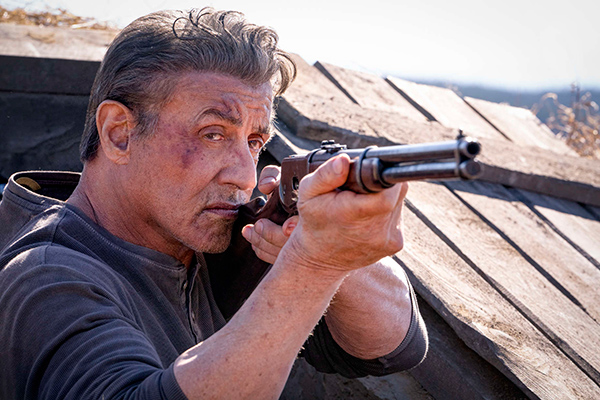
Both Mommy and Mommy’s Day are now streaming on Amazon Prime. (Links: Mommy; Mommy’s Day) How long they will be there I can’t say (Eliot Ness: An Untouchable Life has disappeared, though some other streaming services have it). If you’re a Prime member, it’s included.
[Note from Nate: Eliot Ness: An Untouchable Life is currently on Tubi, free (with ads?)]
So if you haven’t seen both or either of these films, now’s your chance. If you have the earlier full-screen versions, this is an opportunity to see the widescreen versions that Phil Dingeldein and I recently labored to create. I do warn everyone not to expect HD quality (despite being streamed as HD) – the picture (particularly on Mommy) is rather soft. But it’s probably the best either one is going to look.
As I’ve said, compromises were made to be able to afford the wonderful casts.
remain proud of these films, and the Blu-ray double-feature release has received mostly good to great notices. People seem to understand where these little movies were coming from – which is to say blackly humorous melodrama, and a tribute to The Bad Seed and to Patty McCormack herself.
Mommy and Mommy’s Day are streaming on Fandango, too, for a couple of bucks. It may show up elsewhere (I am not kept terribly well in the loop by the distributor). (Links: Mommy; Mommy’s Day)
The novel versions will be coming out again one of these days, part of a package I am negotiating with a major e-book publisher for the seven remaining novels on my backlist (Amazon has most of the rest, Dover has the first two Jack and Maggie Starr novels).
We are also discussing a group of collections of my short fiction (and Barb’s), reprinting Blue Christmas, Too Many Tomcats, and Murder – His and Hers, plus a follow-up to that last title, a collection of my horror stories, and two collections of the stories Matt Clemens and I have done together.
Pulling these stories together has been a big job. They go back to the nineties in many cases, and were written using the word-processing program (wait for it) WordStar, and then converted to now nearly obsolete versions of WordPerfect maybe twenty years ago, and finally to Word. So while I have most of the files in some form, the dizzying array of conversion glitches causes twitches.
For the horror collection I decided to include the radio scripts of “Mercy” and “House of Blood,” written for the Fangoria radio show, Dreadtime Stories. I had adapted a number of my short stories for producer Carl Amari, but had two indie movie ideas I wanted to get up on their feet, and that’s how the two scripts above came to be written. The scripts were in a format (basically a very narrow strip of copy, maybe four inches wide, that required hours of work transforming them into more standard pages of text that wouldn’t bewilder or annoy readers. Fortunately, I have a staff to do such scut work. No, wait – I don’t!
Ultimately, though, it will mean the vast majority of my work will be available in e-book (and real books), with only a handful of things lost to the mists of time.
What have Barb and I been watching lately? Now that we don’t go to the movies anymore?

We finally got around to Ozark, which had been recommended to me by smart people, who were right. It’s a terrific show, very well-acted and full of twists and turns. Several people had told me that somebody (or somebodies) at the series seemed to be fans of mine or were influenced by me, and I think that might be the case. If so, it’s flattering. If not, it’s not the first time I’ve been deluded.
But there’s a hillbilly family reminiscent of the Comforts from the Nolan novels, a character called Boyd (Quarry’s partner in those novels), and a major villain in the first of the three seasons so far is played by the actor (Peter Mullen) who was the Broker in the Quarry TV series. And the good man doing bad things to keep his family afloat is Road to Perdition 101. Maybe half a dozen times I turned to Barb and said, “At least somebody’s reading me.”
The series itself is obviously something that wouldn’t exist without Breaking Bad, and it challenges you (in a Quarry-like way) to root for and identify with people who are making really poor choices. I don’t mean to overstate any debt anybody owes me, because (a) I owe plenty of debts myself, and (b) I may be full of shit about this.
The Guardian describes Ozark thusly: “Ozark follows the misadventures of Marty Byrde (the perpetually clenched Jason Bateman), a financial adviser forced to relocate from Chicago to Osage Beach, Missouri, where he launders money on a scale that would give Al Capone a cluster migraine.”
Bateman uses his standard glib, slightly put-upon persona to nice comic effect initially, and you are slightly amazed at first by how well that persona works in a dark melodrama. But as that melodrama grows darker, and the consequences ever more dire, Bateman’s performance deepens. Other mesmerizing performances come from Laura Linney, as Bateman’s even more glib wife, whose sunny smile delivers manipulative self-interest in such a “helpful” way; and Julia Garner’s Ruth, the most original and unique character in Ozark, a hillbilly girl with a good heart and a crushed soul, capable of kindness and murder, when either is called for.
I like the series and I think you will, too.
We also have recently enjoyed the surprise gift of a second season of Rick Gervais’ After Life, the touching drama/comedy (you don’t think I could ever type the vile word “dramedy,” do you?) that explores the road back for a husband consumed by grief over the loss of a wonderful wife.
The very special thing about After Life is its signature combination of mean humor and genuine sentiment. It’s a show about a man so depressed that suicide is an understandable option, and it’s often frequently hilarious.
I am a Gervais fan and have been for a long, long time. This little series isn’t much talked about, but it may represent his best work.
On the film front, we have watched a lot of British comedies of the late ‘40s and 1950s – such Alastair Sim gems as our perennial favorite, The Belles of St. Trinian’s, but also Laughter in Paradise and School for Scoundrels; and Alec Guinness in All at Sea, The Captain’s Paradise and Last Holiday.
And the most current season of Midsomer Murders, a favorite comfort food of ours, seemed particularly strong after a few missteps the season before.
Bookgasm, which is a book review site you should be regularly visiting, has posted a wonderful review of Girl Can’t Help It that’s been picked up all over the place, and I provided a link last week. But in case you haven’t seen it, I’m going to share it here, right now:
The first book in the series, Girl Most Likely, features Krista Larson as the Chief of Police in Galena, Illinois. She is assisted by her able staff but also by her father, a retired cop from the Dubuque Police Department who does invaluable detective work. In this second work, Girl Can’t Help It, the Larson duo is back on the job.
The book title refers to a song title recorded by local Galena band Hot Rod & The Pistons. They scored a huge hit with the song in the 80s when retro rockabilly hit big (think Stray Cats). They managed two albums and then faded away. But after their election into the Iowa Rock and Roll Hall of Fame, they’re set for a reunion gig and maybe even a little tour. The town of Galena is excited and creates a special musical festival to kick off the whole thing. All well and good.
Until one of the members is found dead of a heart attack in a bathtub. Oh well, old guys do die. But then a second band member commits suicide and his apartment has been ransacked. This hits the Larsons as fishy, and they’re fairly convinced that both deaths are murders.
Of course, we the readers know these are murders because we have chapters written from the point of view of the murderer. The crimes continue to escalate and it’s a battle between the murderer and the police department to see who will come out on top and if the entire lineup of Hot Rod & The Pistons will be killed off one by one.
Everybody knows Max Allan Collins by now. He has multiple series in place, writes another successful series with his wife (the duo goes by Barbara Allan) and is one of the solid bricks in the pyramid of genre writers over the past 40+ years. A lovely, smooth and polished style coupled with a brisk pace makes for quick reading short chapters, believable characters, behaviors and dialogue. If you like any of Collins’ works, you’ll like GIRL CAN’T HELP IT. I think this series has real promise. Recommended. —Mark Rose
Get it at Amazon.
A fun podcast about books, The Inside Flap, was kind enough to give Do No Harm and Nate Heller some attention. The Do No Harm stuff happens a bit after the hour mark. You’ll hear one of the participants wish that I would have Heller solve the JFK assassination (guess what books I sent along to them).
The great blog Paperback Warrior is posting their all-time ten favorite posts, and the one focusing on The First Quarry is #4.
Here’s a great interview with my buddy Charles Ardai, touching on our projects together.
The fantastic Stiletto Gumshoe site talks about Mike Hammer and Masquerade for Murder, and provides some links to things you may have missed.
This nice review of Antiques Fire Sale is a little quirky – doesn’t like all the talking to the reader, and thinks referring to Vivian as “Mother” is disrespectful – but some nice insights are on hand, as well. Loving us is preferred, but liking us is just fine, too.
Finally, check out this terrific Mystery Tribute piece about Mike Hammer and Masquerade for Murder.
M.A.C.











